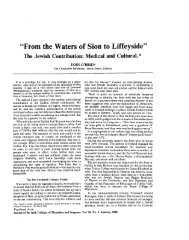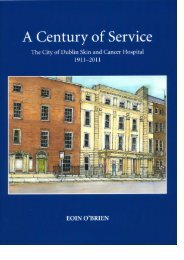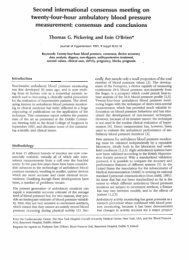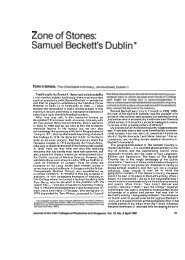Nevill Johnson: Paint the smell of grass - Eoin O'Brien
Nevill Johnson: Paint the smell of grass - Eoin O'Brien
Nevill Johnson: Paint the smell of grass - Eoin O'Brien
You also want an ePaper? Increase the reach of your titles
YUMPU automatically turns print PDFs into web optimized ePapers that Google loves.
46 <strong>Nevill</strong> <strong>Johnson</strong> l <strong>Paint</strong> <strong>the</strong> Smell <strong>of</strong> Grass<br />
Coal and potato store, Marrowbone Lane<br />
published in book form in 1980, Dublin: The People’s City, which was awarded a prize at <strong>the</strong><br />
Leipzig Book Fair. One set <strong>of</strong> negatives was purchased by RTE, whose plans to create a reel <strong>of</strong><br />
<strong>the</strong>m to use as a film with music came to nothing. The o<strong>the</strong>r is now in <strong>the</strong> collection <strong>of</strong> <strong>the</strong><br />
Museum <strong>of</strong> Modern Art in New York, although its path <strong>the</strong>re seems a little unclear. The best<br />
tribute to <strong>Nevill</strong> <strong>Johnson</strong> as a photographer occurred in 2003, when a selection <strong>of</strong> <strong>the</strong> images was<br />
reprinted and exhibited in Dublin at <strong>the</strong> Lemonstreet Gallery.<br />
This was perhaps <strong>the</strong> high point <strong>of</strong> <strong>Nevill</strong> <strong>Johnson</strong>’s love <strong>of</strong> Dublin. He had achieved a<br />
measure <strong>of</strong> security through his art and his teaching. This latter activity was a mixed blessing;<br />
while <strong>the</strong>re were a number <strong>of</strong> amateur lady ‘Hollyhockers’, he also had a number <strong>of</strong> serious pupils<br />
such as Anne Yeats and Cecil King, a businessman who subsequently became a successful abstract<br />
painter. He had also become involved in <strong>the</strong> <strong>the</strong>atre, designing and painting stage sets, <strong>of</strong> which<br />
some photographs survive.<br />
Perhaps one <strong>of</strong> <strong>the</strong> most interesting events for <strong>Johnson</strong> at this period was an exhibition by <strong>the</strong><br />
Institute <strong>of</strong> Contemporary Art in Boston, held in 1951, in which <strong>Johnson</strong> exhibited alongside<br />
Thurloe Conolly and Louis le Brocquy. Although he was never personally close to ei<strong>the</strong>r <strong>of</strong> <strong>the</strong>se,<br />
<strong>the</strong>y were perhaps closer to him as artists than <strong>the</strong> Ulster group he had initially been shown<br />
alongside in <strong>the</strong> technical and intellectual ambition <strong>of</strong> <strong>the</strong>ir art and also in terms <strong>of</strong> <strong>the</strong>ir<br />
relationship to international painting in <strong>the</strong> 1940s and 1950s.<br />
The ambition <strong>of</strong> his work takes <strong>Johnson</strong> beyond any <strong>of</strong> his contemporaries in Dublin; <strong>the</strong> closest<br />
comparison is with Louis le Brocquy at this period. <strong>Johnson</strong>’s subject matter had altered from <strong>the</strong><br />
unpopulated wastelands <strong>of</strong> <strong>the</strong> immediate post-war years. Whereas before <strong>the</strong>re had always been <strong>the</strong><br />
suggestion <strong>of</strong> human absence through objects that took on human significance, figures now begin<br />
to dominate. One can speculate whe<strong>the</strong>r <strong>the</strong> number <strong>of</strong> photographic images <strong>of</strong> people in <strong>the</strong>ir<br />
environment that <strong>Johnson</strong> took at this time engendered a sympathy with <strong>the</strong> individual that had<br />
previously been encapsulated by a wider and more anonymous common humanity. Perhaps also he<br />
saw <strong>the</strong> broader expressive possibilities which <strong>the</strong> human form opened up.<br />
These paintings have a common atmosphere that runs through <strong>the</strong>m. Even <strong>the</strong> more diverse<br />
examples, <strong>of</strong> nurses and nuns, while <strong>the</strong>y have a strangeness that is almost difficult to take seriously,<br />
have an unsettling air. In The Stranger, exhibited in <strong>Johnson</strong>’s 1952 one-man exhibition, a mo<strong>the</strong>r<br />
and child sit in a bare room, <strong>the</strong> child touching her mo<strong>the</strong>r’s leg but turning to look out at <strong>the</strong><br />
landscape beyond, where a stranger is approaching from a distance. The fragmentation <strong>of</strong> every<br />
form into various geometric arrangements, <strong>the</strong> muted palette and <strong>the</strong> simplicity <strong>of</strong> content follows<br />
on from a painting such as Landscape with Rock Pool. Passages <strong>of</strong> <strong>the</strong> surface are smoothly and<br />
evenly finished (<strong>the</strong> folds <strong>of</strong> material <strong>of</strong> <strong>the</strong> mo<strong>the</strong>r’s skirt are even reminiscent <strong>of</strong> <strong>the</strong> cliffs in<br />
Linenscape almost a decade earlier), but we can see a slightly rougher and more opaque surface in<br />
parts which prefigures <strong>the</strong> increasingly worked surfaces <strong>of</strong> <strong>the</strong> next few years.<br />
<strong>Nevill</strong> <strong>Johnson</strong> l The Dublin years 1947–1958 47









